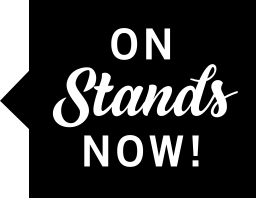The holiday season is typically a time to gather with loved ones and spread cheer around the community.
It’s also a time when the Greater Baton Rouge Food Bank typically has its largest food supply ready to give to those in need. But the food bank experienced dangerously low levels of donations this past holiday season. Shelves were bare, and food was extremely scarce throughout the winter months, leaving many who relied on the food bank uncertain if they would have enough to eat.

The food bank was forced to issue several calls for assistance, even enlisting the governor for help. Now, its leadership says they are still trying to get back to normal levels on their warehouse shelves after several years of struggles.
The multitude of natural disasters in the past couple of years—including the August 2016 flood in Louisiana—led to a shortage of monetary donations and supply nationwide, according to Mike Manning, CEO and president of the Greater Baton Rouge Food Bank.
“These disasters created a situation where donations were drained for use in disaster response,” Manning says. “The availability of food in a donated market dissipated, which created a big challenge for us.”
Most of its food supply is purchased through wholesale vendors, while some comes from direct food donations and grocery stores that are swapping out inventory. The food bank then distributes that supply to more than 115 agencies in the area.
Based on news reports, the food bank had about 1 million pounds less than its usual inventory at the peak of its food shortage last November.
Plans were made to potentially ration food if levels remained low.
The thought of not being able to provide food to all who needed it was extremely difficult, Manning says—especially when considering who most benefits from the food bank’s services.
“There are a lot of senior citizens and a lot of children who depend on us to be able to put food on the table,” he says. “We see seniors with a fixed income of living on retirement who are facing the choice of buying their prescription medicines or eating. That’s not really a choice.”
The food bank noticed the low supply it was facing a few months ahead of time. Manning says the organization tried to publicize the growing need, but major events throughout the fall like the midterm elections and even the LSU vs. Alabama football game drowned out the food bank’s pleas.
It eventually had to reissue its call for help. This time, it was amplified by Gov. John Bel Edwards at a November press conference held at the food bank’s warehouse.
Through multiple drives to increase supply throughout the city, the inventory slowly increased. People were able to get the food they needed, Manning says, and the food bank has continued to improve its supply. It inventoried about 1.5 million pounds of food as of March. That said, Manning admits the supply has yet to reach the levels the food bank had available in the past, which are normally around 2 million pounds of food.
“We are striving to get it back up to the level that it was at and monitoring our supply,” he says. “We are hopeful with what we have been doing in our community that it will help weather us through this year. But it is always a challenge, especially in the early part of the year.”
Still, with a growing supply and a community eager to help, Manning remains confident his organization will be able to continue giving food to those who need it most.
Help out
Greater Baton Rouge Food Bank CEO Mike Manning says volunteers are always needed. He also advises that while food donations are welcome, monetary donations can go even further because the food bank buys most of its products through wholesale vendors. brfoodbank.org
This article was originally published in the April 2019 issue of 225 Magazine.








